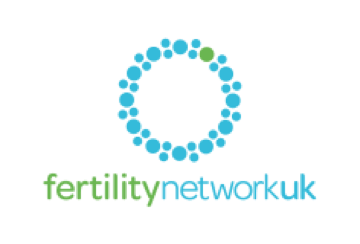How Early Can You Test After Frozen Embryo Transfer?
Having fertility treatment can be exciting for you, as it can mark the start of your journey into parenthood. However, it can also be nerve-racking as you spend time waiting to find out whether you’re pregnant.
One type of fertility treatment we offer at IVF Matters is frozen embryo transfer (FET). If you’re planning on undergoing this fertility procedure, you might wonder how long you must wait to find out if you are expecting.
In this blog post, we will discuss what you can expect after a frozen embryo transfer, early signs of implantation and how early you can take a pregnancy test after a FET.
What to expect after frozen embryo transfer
A frozen embryo transfer is a fertility treatment where previously frozen embryos are thawed and then transferred into the uterus. Sometimes, a fertility expert can carry out FET after failed in vitro fertilisation (IVF), or when you have frozen embryos left over from previous cycles of IVF.
Although it can be an exciting time, you need to be prepared for the recovery and possible outcomes of the procedure physically and emotionally. Physical symptoms after a FET can include mild to moderate cramping, bloating and spotting or breakthrough bleeding.
Emotional side effects can include anxiety and stress, which can negatively impact your success rate.
However, there are things you can do to manage these side effects, such as:
- Staying hydrated
- Eating a well-balanced diet
- Getting enough rest
- Taking pain relief medication (as approved by your doctor)
- Emotional support from a counsellor or family and friends
There are also some risks associated with FET, and you must keep a close eye on your body after the procedure. If you experience heavy bleeding, severe pain, or signs of infection; such as fever, chills or vomiting, seek medical attention immediately.
How long after a frozen embryo transfer does implantation occur?
Implantation is a critical step when trying to fall pregnant. It refers to the point at which the embryo attaches to the lining of your uterus and starts to develop.
The implantation process begins the moment that the embryo enters the uterus. The embryo will then ‘hatch’ out of its protective shell and attach to the lining, which is rich in nutrients and blood vessels. As the embryo develops, the placenta will start to form and provide nourishment throughout your pregnancy.
The timing of implantation can vary and many factors influence it, such as the age and quality of the embryo, the thickness of your uterine lining and the hormonal changes in your body.
How early can you test after frozen embryo transfer?
Determining when to take a pregnancy test after FET can be exciting and nerve-racking. Still, you must wait the recommended amount of time to ensure you get accurate results and reduce the risk of false positives or negatives.
You must typically wait 10-14 days before taking a pregnancy test. This is because the embryo needs enough time to implant and produce enough of the hormone hCG (human chorionic gonadotropin), which a test will detect.
The most common types of pregnancy tests are urine and blood tests. You can easily buy urine pregnancy tests from a pharmacy, but a blood test will need to be done by a medical professional.
When choosing a pregnancy test, it is essential to check its sensitivity level. The sensitivity level refers to the lowest level of hCG the test can detect. Tests with higher sensitivity levels can detect pregnancy earlier than those with lower sensitivity levels.
The pros and cons of testing early
Early testing after FET can reduce your anxiety, and reducing the waiting period can positively affect your stress and anxiety levels, which can help when trying to fall pregnant.
Another benefit is that early testing means any abnormalities are detected early, such as an ectopic pregnancy or miscarriage. It can help reduce the risk of potential health problems in the long run.
However, there are some potential disadvantages to testing early. These can include false positives or false negatives leading to numerous problems. For example, a false negative can lead you to believe you aren’t pregnant, and then you may engage in activities like drinking alcohol which could damage the embryo. Such activities can also mean a delay in medical care for you.
False positives can mean you undergo unnecessary medical treatment and testing, as well as build a false sense of certainty that you will become a parent. Therefore, it is essential that you test when your doctor recommends and not before.
Early signs of implantation
Implantation is a critical step in early pregnancy, and often comes with some symptoms. However, not all women will experience implantation symptoms, and it’s vital that you know the difference between these and other symptoms unrelated to implantation.
Some common symptoms of implantation may include:
- Spotting or light bleeding – implantation bleeding is usually lighter and shorter than a regular menstrual period and may occur around the time of the expected period
- Cramping – during implantation, mild cramping or twinges may be felt in the lower abdomen or back
- Breast tenderness or soreness – this is due to the hormone changes
- Nausea or fatigue
While these symptoms can indicate implantation, they can also be related to other factors such as stress, illness, hormonal changes and your menstrual cycle. In addition, implantation symptoms tend to be short-lived and occur during a specific time window.
It is vital to track implantation and other general symptoms carefully to differentiate between them, and speak to your doctor if you are in doubt or confused.
The best way to know whether these are implantation symptoms is with a pregnancy test taken after the recommended period after FET.
How soon after a failed FET can you try again?
Not falling pregnant after having any type of fertility treatment can be physically and emotionally challenging when trying to conceive. But it’s important to know that this failure is not a reflection of you — it is simply a matter of science and determining factors.
The embryo’s quality plays a significant role in whether it implants. Poor-quality embryos can lead to missed implantation or early miscarriage. Poor sperm quality or low sperm count can be a reason why implantation doesn’t occur too.
The thickness of the uterine lining, uterine fibroids, polyps or autoimmune disorders can impact implantation. Your age can also mean IVF doesn’t go to plan, as your fertility declines as you age.
Trying again
When you decide to try again, you must consider whether you are emotionally and physically prepared. It’s essential to think about the financial implications as well.
Some fertility clinics will ask you to wait for at least one or two menstrual cycles before trying IVF again, as it allows your body to recover hormonally from the previous cycles.
If you are trying to start a family without success, seeking support from a fertility specialist like IVF Matters can be the turning point in your journey. Our expert team of fertility consultants can help you discover which fertility treatment is correct for you with the support of testing and careful diagnostics.
Book a free advisory call today and take your first steps into parenthood.
Introducing
Buy Now Pay Later
Payments in instalments. No credit checks! Quick applications! Select at checkout
Working with






